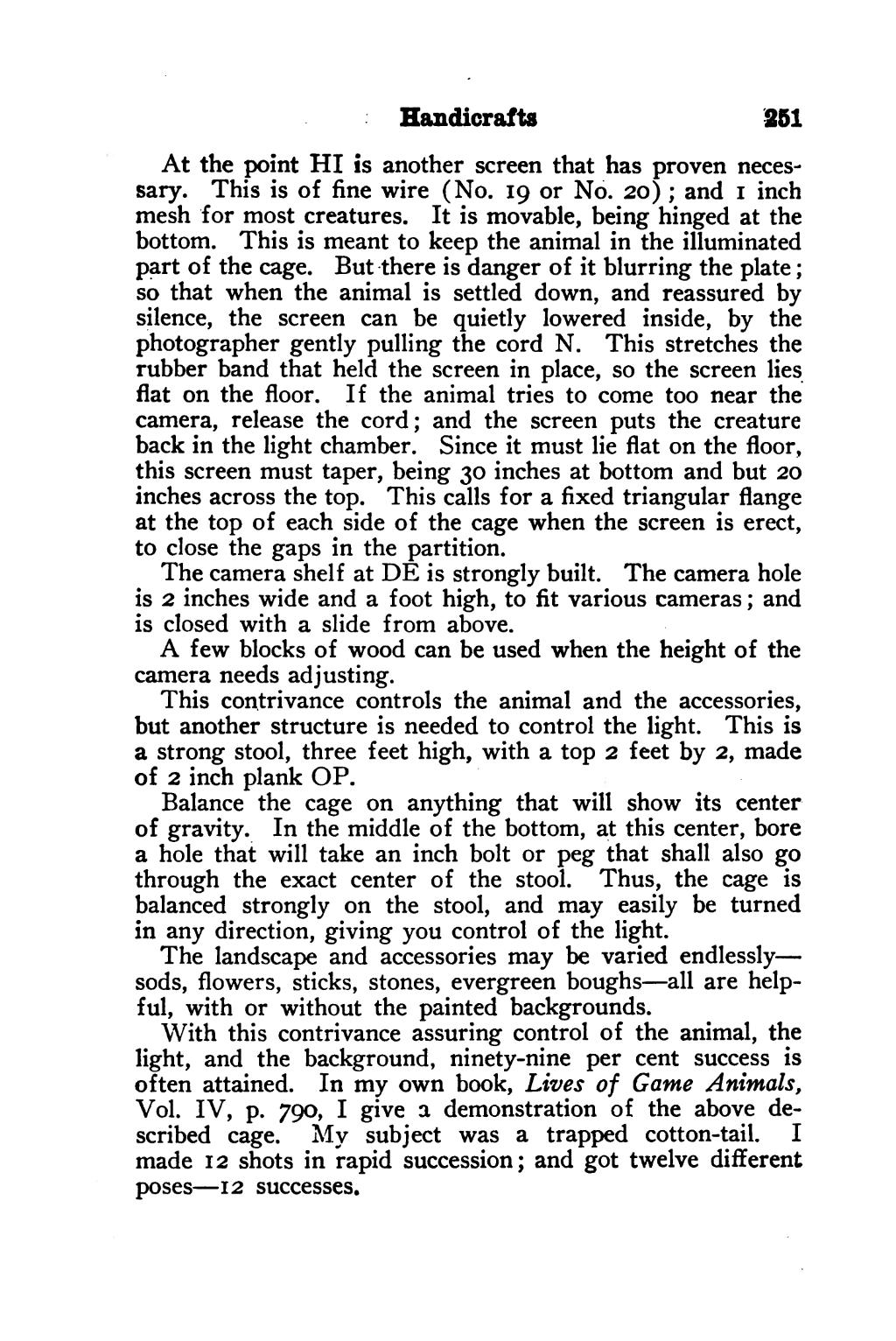Handicrafts 251 At the point HI is another screen that has proven neces- sary. This is of fine wire (No. 19 or No. 20); and 1 inch mesh for most creatures. It is movable, being hinged at the bottom. This is meant to keep the animal in the illuminated part of the cage. But-there is danger of it blurring the plate ; so that when the animal is settled down, and reassured by silence, the screen can be quietly lowered inside, by the photographer gently pulling the cord N. This stretches the rubber band that held the screen in place, so the screen lies flat on the floor. If the animal tries to come too near the camera, release the cord; and the screen puts the creature back in the light chamber. Since it must lie flat on the floor, this screen must taper, being 30 inches at bottom and but 20 inches across the top. This calls for a fixed triangular flange at the top of each side of the cage when the screen is erect, to close the gaps in the partition. The camera shelf at DE is strongly built. The camera hole is 2 inches wide and a foot high, to fit various cameras; and is closed with a slide from above. A few blocks of wood can be used when the height of the camera needs adjusting. This contrivance controls the animal and the accessories, but another structure is needed to control the light. This is a strong stool, three feet high, with a top 2 feet by 2, made of 2 inch plank OP. Balance. the cage on anything that will show its center of gravity. In the middle of the bottom, at this center, bore a hole that will take an inch bolt or peg that shall also go through the exact center of the stool. Thus, the cage is balanced strongly on the stool, and may easily be turned in any direction, giving you control of the li ght. The landscape and accessories may be varied endlessly— sods, flowers, sticks, stones, evergreen boughs—all are help- ful, with or without the painted backgrounds. With this contrivance assuring control of the animal, the light, and the background, ninety-nine per cent success 1S often attained. In my own book, Lives of Game Animals, Vol. IV, p. 790, I give a demonstration of the above de- scribed cage. My subject was a trapped cotton-tail. I made 12 shots in rapid succession; and got twelve different poses—1I2 successes,
Stránka:roll 1931.djvu/267
Z thewoodcraft.org
Tato stránka nebyla zkontrolována
